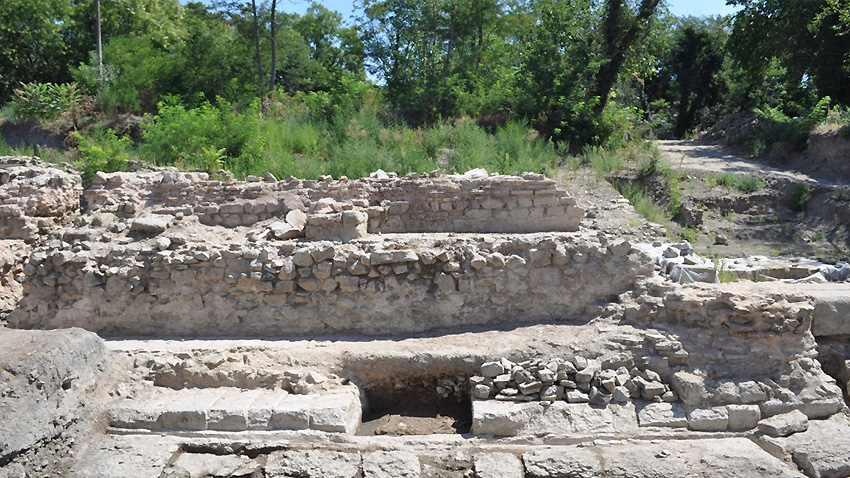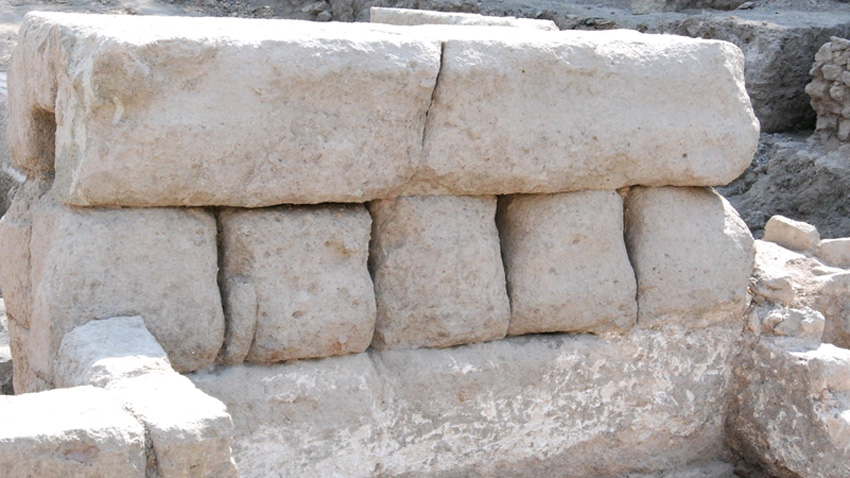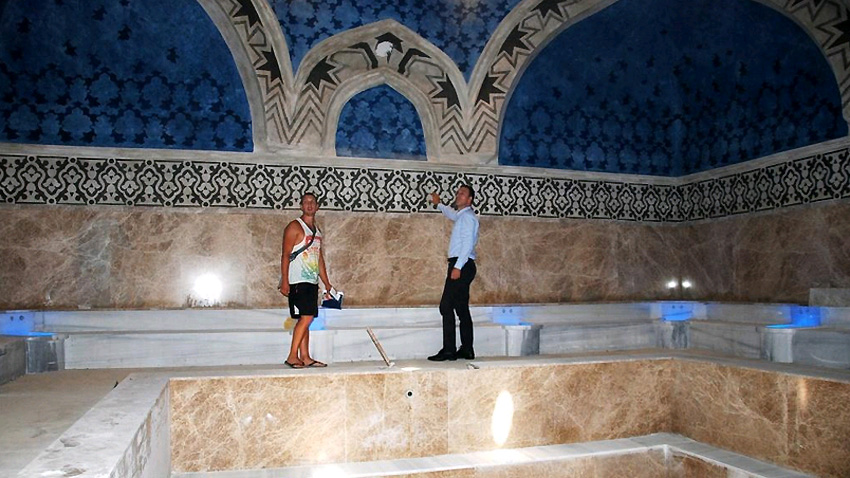 3
3
The Aquae Calidae antique settlement near Burgas /the mineral baths of Burgas/ will turn over the next tourist season into one more attractive spot for both Bulgarians and foreign guests. A transparent roof will cover the ruins of the ancient baths of emperors and patricians, making those a tourist attraction.
Aqua Calidae Thermopolis was one of the most distinguished spa centers in ancient times. In the 1st century BC the Thracians turned the spring into the most honored sanctuary of the Three Nymphs, which had been attracting lots of pilgrims for centuries. The first baths here were built by the Roman conquerors in the middle of the 1st century. The town went on to develop rapidly with the Byzantines as well. Emperor Justinian 1st tried to protect it from the Barbarian raids with a fortress wall. The miraculous waters offered healing to emperors, kings and sultans through the centuries.

Associate Professor Dimcho Momchilov takes us around the archaeological reserve:
“Research on the complex started barely in 2008. We registered the greatest discoveries with the remains of an early-Byzantine bath. We also found a pretty big settlement of 10 square kilometers around it and a fortified site of some 2 km. It used to be a road station until 5 – 6 c. AD, while an early-Roman town could be found on the place as of the 2 c. Then the Goths’ tribes set the baths on fire several times. In the 4 c. those were reconstructed, the early-Byzantine architecture reveals. The excavations brought into daylight several more farming premises, a part of a church and also 40 m of fortress wall, constructed in the 6 c. by Emperor Justinian. The town attracted people who needed medical treatment. However it was also the target of numerous raids.”

The turbulent history of the antique town with the hot mineral springs continued over the centuries. The raids of the crusaders in 1204 were fatal for the settlement, when Latin Emperor Henry II set the place on fire, as his brother Baldwin I had been captured by Bulgarian Tsar Kaloyan. Still later Sultan Suleiman II arrived here in 1562. He ordered the construction of a new bath on the ruins of the burnt Roman baths, feeling grateful for the curing of his gout. Today the bath of the sultan, or as the locals call it - the Turkish bath, has been fully restored. It is decorated with marble and ceramics, typical of Oriental culture. The idea is the bath, dated to the 17th century to be turned into a tourist attraction – a living museum of mineral water and healing treatment.

The municipality of Burgas has an overall concept for all artifacts of Aquae Calidae, Associate Prof. Momchilov goes on to say:
“We determined the parameters of the baths around the mineral springs over the last year. We have there different architectural remains and structures, spreading over about 0.5 ha. The idea is one part to be showed in front of the actual Turkish bath and these Roman and Byzantine archaeological remains to be exhibited as a joint complex. Thus we will have a really good view on the tourist site, accentuating on the continuity from ancient times up to the present day.”
The ambitious project of Burgas authorities also envisages a museum with all unearthed artifacts from Aquae Calidae– gold coins, medical instruments, bathing tools… The Turkish baths will offer to its visitors a warm and cold pools, a massage spot with herbal and other natural products etc.
English version: Zhivko Stanchev
Photos: courtesy of Burgas Municipality
The book "Icons from the National Church Historical and Archaeological Museum" - a huge work of over 500 pages, with more than 700 published photographs and accompanying scientific articles, was officially presented a few days ago. The unique..
A humble military chaplain made his first contact with Bulgaria in 1921, arriving with the mission of searching for Italian soldiers who had disappeared without a trace during World War I. However, he did not remain indifferent to the fate of this small..
Beloslav is a small town on one of the branches of Varna Lake. Yet it is here, in this quiet little town, that the only preserved Bulgarian submarine – Slava – is anchored . It was decommissioned a long time ago, and has now been turned in one of..

+359 2 9336 661
